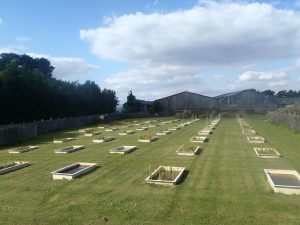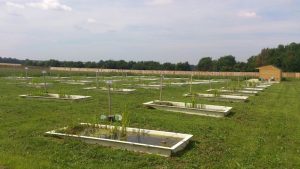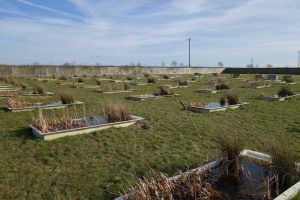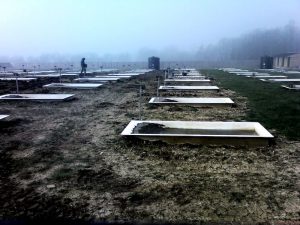Cambridge Environmental Assessments, ADAS Boxworth, Cambridgeshire, CB23 4NN
Dr Nadine Taylor
Please login or request access to view contact information.
Outdoor freshwater static mesocosm systems.
We have 99 flat bottomed and 100 unique sloped mesocosms which are designed to simulate edge of field environments. Our sloped mesocosms were installed in 2013, are 2.6 m long, 1 m wide and 0.7 m deep and are used for herbicide studies. The sloped mesocosms are designed to enable the incorporation of a wide variety of plant species, providing a habitat which mimics the plant community found in edge of field environments. Our flat bottomed mesocosms were installed in 2009, are 1.8 m long, 0.9 m wide and 0.8 m deep and are predominantly used in pesticide studies.
Indoor laboratories.
We have a GLP laboratory facility in which we can carry out higher tier chronic testing on multiple and single species under controlled conditions.
- Outdoor mesocosms: Plant community, water depth, test item present, initial organism establishment
- Indoor laboratories: Environmental parameters (including temperature, pH, oxygen and light/dark cycles), species present, sediment/substrates, feeding regimes
At CEA we produce robust population and community endpoints (ETO RAC and ERO RAC) that meet the requirements of the EFSA (2013) aquatic guidance. We conduct mesocosm studies on both herbicide and pesticide products and can carry out the application of our test item in several ways (e.g. mix-in, spray-over) and perform single or multiple applications as required.
Chemical risk assessment, primarily determining regulatory endpoints for various agrochemicals
- Higher tier freshwater aquatic testing to Good Laboratory Practice (GLP) standards.
- Bespoke experimental design
- Identification of freshwater phytoplankton, periphyton, macrophytes, zooplankton, macroinvertebrates and emergent insects
- Statistical analysis of data generated to current guideline requirements
- Indoor laboratories for acute and chronic higher tier testing
- Probes for monitoring temperature, pH, conductivity, dissolved oxygen and turbidity
- Sampling equipment to collect zooplankton and phytoplankton
- Periphytometers to allow the periphyton community to be sampled quantitatively
- Emergent insect traps
- Sediment sampling apparatus
- Depth integrated water samplers (DIWS)
- High accuracy scales for formulation of test item
- Bioassay cages and bags to house organisms within our mesocosms
- GLP storage facilities
Local hotels available near to the site.
 |
 |
 |
 |
